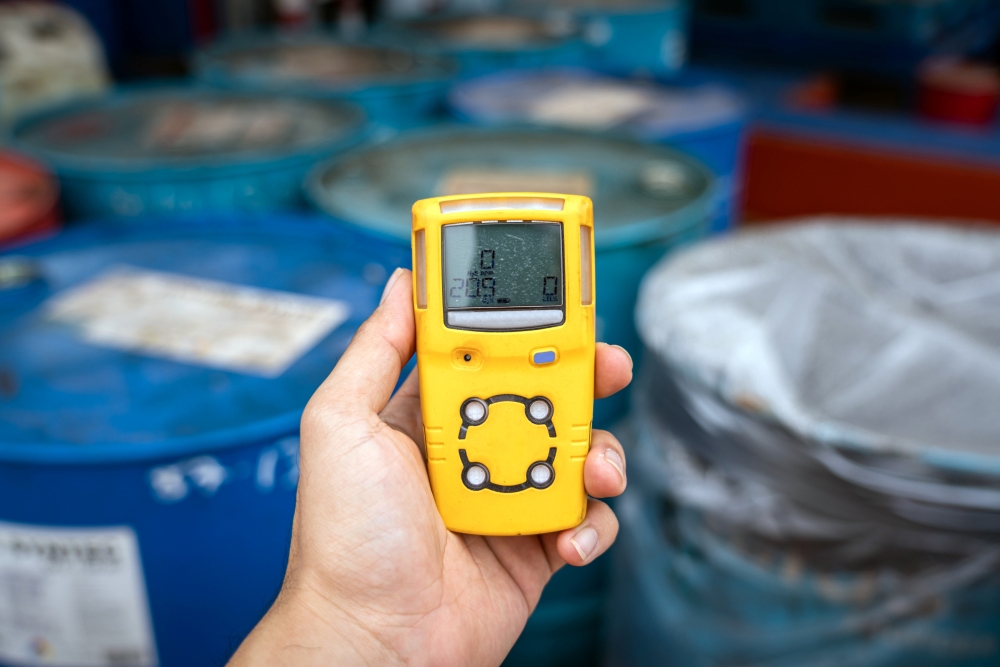White Paper: Invisible Danger: When Gas Hazards Go Unchecked.
Invisible Danger:
When Gas Hazards Go Unchecked
This white paper examines a serious incident where two workers were overcome by hydrogen sulphide gas while carrying out excavation work. The lack of proper atmospheric testing, risk communication, and rescue preparedness led to a near-fatal situation, causing lasting physical and psychological harm. This paper underscores the vital importance of gas detection, risk assessment, and worker training in preventing exposure to toxic atmospheres.
Introduction:
In a recent court case, two companies were fined a combined total of more than half a million dollars after workers were exposed to dangerously high levels of hydrogen sulphide while working in a contaminated pit. Despite previous readings showing unsafe gas levels, no atmospheric testing was conducted on the day and workers were not advised of the risks. No gas monitoring equipment was available on site.
One worker fell unconscious while climbing out of the pit and landed face down in a toxic liquid. His supervisor, in a rescue attempt, was also overcome twice before finally managing to escape and call for help. Both men survived, but only through sheer luck.
Case Background:
The incident occurred during excavation work at a waste facility to address foul odours from rotting materials. Weeks earlier, gas measurements had identified hydrogen sulphide at hazardous levels, yet this critical information was never communicated to the workers tasked with entering the pit.
With no gas detection equipment available, the workers began the excavation without knowing the atmospheric conditions. The first worker lost consciousness while exiting the pit and collapsed into the liquid leachate at its base. The second worker attempted a rescue but also succumbed to the fumes twice before managing to get both men to safety.
Consequences:
Both workers sustained severe injuries.
- One experienced chemical burns to his eyes, lung damage, heart rhythm disturbances, and seizures.
- The other developed post-traumatic stress disorder (PTSD), leaving him unable to return to work and facing significant financial and social challenges.
The long-term effects of toxic gas exposure go beyond the physical. Mental health, livelihoods, and relationships can all be irreversibly impacted.
Legal Findings:
The investigation found:
- No risk assessment or safe work plan for the excavation.
- Workers were not informed of previously recorded hazardous gas levels.
- No gas detection equipment was available on site.
- Inadequate rescue planning for confined or hazardous spaces.
The companies involved were found to have breached their duties under the Health and Safety at Work Act 2015, exposing workers to a risk of death or serious injury.
Analysis:
This incident highlights a complete breakdown in hazard control for atmospheric risks. Hydrogen sulphide is a colourless gas with a distinctive odour at low concentrations. At higher levels, it deadens the sense of smell, giving no warning before it becomes deadly.
Key failures in this case included:
- No pre-entry atmospheric testing.
- No continuous gas monitoring during work.
- No emergency breathing apparatus or rescue plan.
- No worker training in recognising or responding to toxic gas hazards.
The Role of Atmospheric and Gas Detection:
Gas detection is a non-negotiable safety step for any work where harmful gases could be present. Testing should occur before work starts and continue throughout the task. Workers must also be trained to interpret results and take immediate action when unsafe levels are detected.
Passive reliance on smell or visual cues is not enough. Gases like hydrogen sulphide can kill within seconds in high concentrations.
Hazardous Substances Management:
Handling fertilisers and other chemicals requires proper training to prevent exposure-related illnesses or injuries. Hazardous substance training helps workers identify, store, and use chemicals safely, reducing the risk of harm.
Training and Prevention:
The workers in this case had no gas detection equipment, no atmospheric testing, and no knowledge of the prior hazard readings. Proper training could have:
- Equipped them to insist on pre-entry testing.
- Helped them recognise the danger and stop work.
- Provided the skills to conduct safe rescues without further casualties.
Safety n Action’s Atmospheric and Gas Detection course covers:
- How to identify and assess atmospheric hazards.
- Operation and limitations of gas detection equipment.
- Conducting and interpreting gas test results.
- Responding to unsafe atmospheric conditions.
- Performing tests and interpreting results in energy and chemical plants.
This knowledge is essential for industries where toxic gases, flammable atmospheres, or oxygen deficiencies can occur, such as waste management, petrochemical processing, agriculture, power generation, and manufacturing.
Conclusion:
The events described were entirely avoidable. With correct planning, hazard communication, and gas detection, both workers could have gone home unharmed. Instead, the failure to detect and control atmospheric hazards nearly cost two lives and left permanent physical and emotional scars.
Businesses must:
- Conduct and document atmospheric testing before entry into hazardous areas.
- Provide continuous gas monitoring during high-risk work.
- Train all staff in gas detection and emergency response.
- Communicate all known hazards to workers.
- Develop and rehearse rescue plans.
When dealing with invisible dangers, prevention is the only safe option.
Learn more about our Atmospheric and Gas Detection training here, and ensure your workers are prepared to face, and survive, the hazards they cannot see.
References:
WorkSafe New Zealand. (2025). Fall from height leaves worker with permanent injuries. Retrieved from: https://www.worksafe.govt.nz/about-us/news-and-media/fall-from-height-leaves-worker-with-permanent-injuries/
Safety n Action. (n.d.). Height safety introduction. Retrieved from: https://www.safetynaction.co.nz/en/our-courses/course-catalogue/height-safety-introduction/




